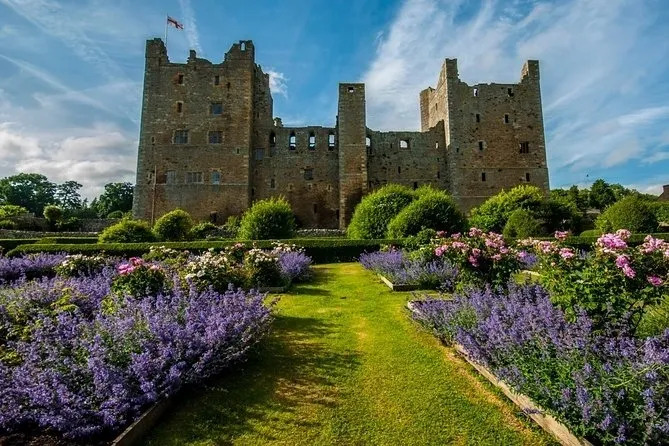Built between 1378 and 1399 by Richard, 1st Baron Scrope of Bolton, Bolton Castle stands as an impressive specimen of a quadrangular castle. It’s rumored that the construction costs amounted to around 18,000 Marks, showcasing the architectural ingenuity of its era.

In the 16th century, writer John Leland marveled at Bolton Castle’s features, which included an astronomical clock in the courtyard and clever smoke tunnels designed to carry hearth smoke from the hall. Sir Francis Knollys praised its towering walls, noting them as the tallest of any house he had encountered.

During the Pilgrimage of Grace rebellion against King Henry VIII’s religious reforms in 1536, John, 8th Baron Scrope, offered refuge to Adam Sedbar, Abbot of Jervaulx, within Bolton Castle. This act of defiance incurred the king’s wrath, leading to the castle being torched and sustaining significant damage.

Despite the destruction, Bolton Castle underwent repairs, and its owner, Sir John, eventually reclaimed his seat in Parliament. Today, Bolton Castle stands as a testament to resilience, with its rich history and architectural splendor drawing visitors from far and wide to explore its storied past.

Mary, Queen of Scots, spent a significant six-month period imprisoned at Bolton Castle, adding yet another chapter to the fortress’s rich history. Legend has it that during her escape attempt towards Leyburn, she lost her ‘shawl,’ leading to the naming of a cliff edge near Leyburn as ‘The Shawl.’

Following her defeat at the Battle of Langside in 1568, Mary sought refuge in England, becoming a perceived threat to Queen Elizabeth I. Initially held at Carlisle Castle, she was later moved to Bolton Castle under the supervision of Sir Francis Knollys, who commended its security and grandeur. Mary resided in Henry Scrope’s personal apartments within the castle’s South-West tower, accompanied by a retinue of knights, servants, and ladies-in-waiting. Despite initial challenges with accommodations, furnishings were sourced from local houses and even from Queen Elizabeth herself, underscoring the significance of Mary’s captivity at Bolton Castle.

After the passing of Emanuel Scrope, 1st Earl of Sunderland, in 1630, Bolton Castle came into the possession of his eldest illegitimate daughter, Mary, following her marriage to Charles Powlett, 6th Marquess of Winchester and 1st Duke of Bolton. Today, the castle is under the ownership of their descendant, Thomas Peter Algar Orde-Powlett, 9th Baron Bolton, who inherited the estate in June 2023.

Visitors flock to Bolton Castle to explore its expansive gardens, which feature a variety of attractions including a maze, herb garden, wild flower meadow, rose garden, and vineyard. The castle also hosts captivating falconry displays during select months, drawing in tourists from far and wide. Furthermore, Bolton Castle serves as a picturesque venue for special events such as weddings, with a portion of the structure meticulously restored for this purpose, while maintaining another section in a state of ruin to preserve its historic allure.

